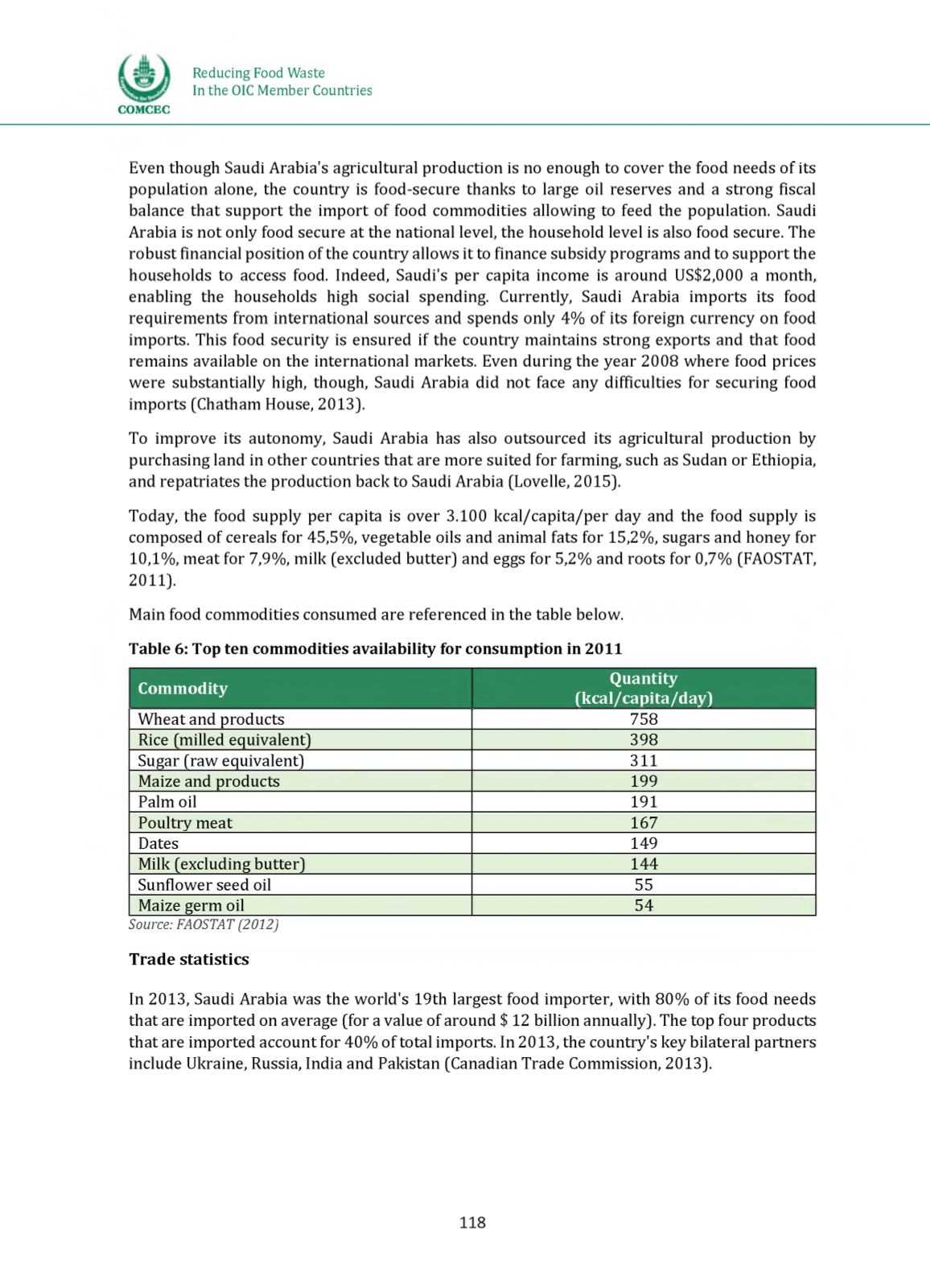

Reducing Food Waste
In the OIC Member Countries
COMCEC
Even though Saudi Arabia's agricultural production is no enough to cover the food needs of its
population alone, the country is food-secure thanks to large oil reserves and a strong fiscal
balance that support the import of food commodities allowing to feed the population. Saudi
Arabia is not only food secure at the national level, the household level is also food secure. The
robust financial position of the country allows it to finance subsidy programs and to support the
households to access food. Indeed, Saudi's per capita income is around US$2,000 a month,
enabling the households high social spending. Currently, Saudi Arabia imports its food
requirements from international sources and spends only 4% of its foreign currency on food
imports. This food security is ensured if the country maintains strong exports and that food
remains available on the international markets. Even during the year 2008 where food prices
were substantially high, though, Saudi Arabia did not face any difficulties for securing food
imports (Chatham House, 2013].
To improve its autonomy, Saudi Arabia has also outsourced its agricultural production by
purchasing land in other countries that are more suited for farming, such as Sudan or Ethiopia,
and repatriates the production back to Saudi Arabia (Lovelle, 2015].
Today, the food supply per capita is over 3.100 kcal/capita/per day and the food supply is
composed of cereals for 45,5%, vegetable oils and animal fats for 15,2%, sugars and honey for
10,1%, meat for 7,9%, milk (excluded butter] and eggs for 5,2% and roots for 0,7% (FAOSTAT,
2011].
Main food commodities consumed are referenced in the table below.
Table 6: Top ten commodities availability for consumption in 2011
Commodity
Quantity
(kcal/capita/day)
Wheat and products
758
Rice (milled equivalent]
398
Sugar (raw equivalent]
311
Maize and products
199
Palm oil
191
Poultry meat
167
Dates
149
Milk (excluding butter]
144
Sunflower seed oil
55
Maize germ oil
54
Source: FAOSTAT (2012)
Trade statistics
In 2013, Saudi Arabia was the world's 19th largest food importer, with 80% of its food needs
that are imported on average (for a value of around $ 12 billion annually]. The top four products
that are imported account for 40% of total imports. In 2013, the country's key bilateral partners
include Ukraine, Russia, India and Pakistan (Canadian Trade Commission, 2013].
118
















